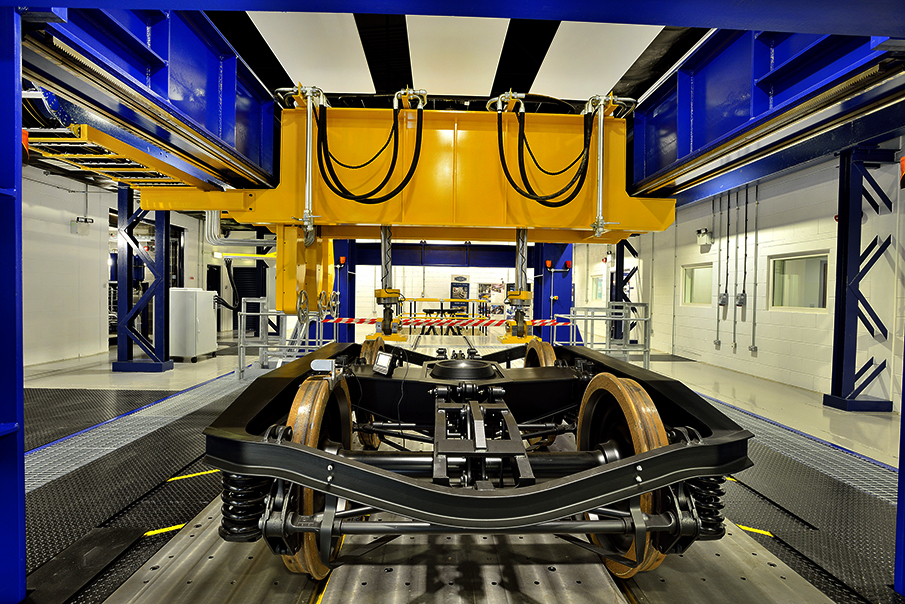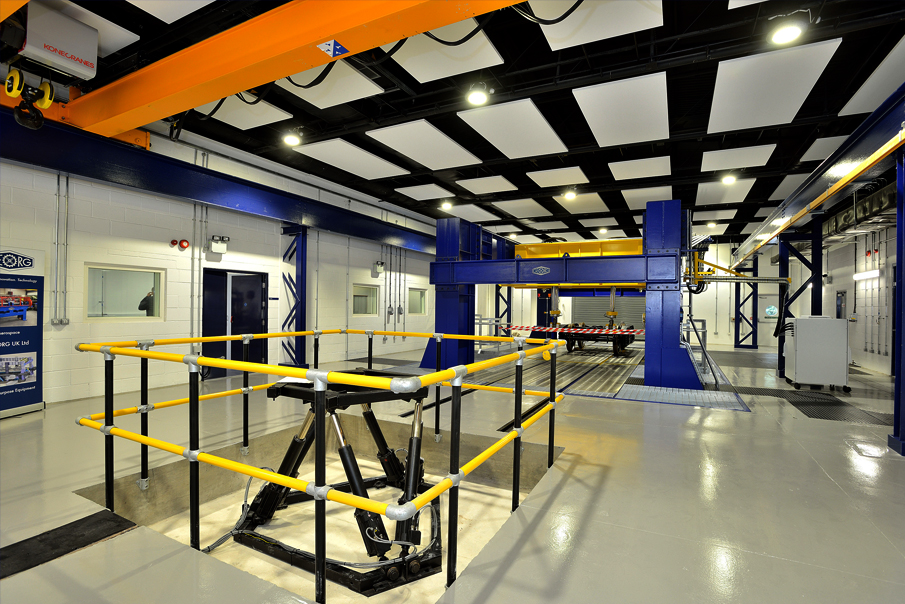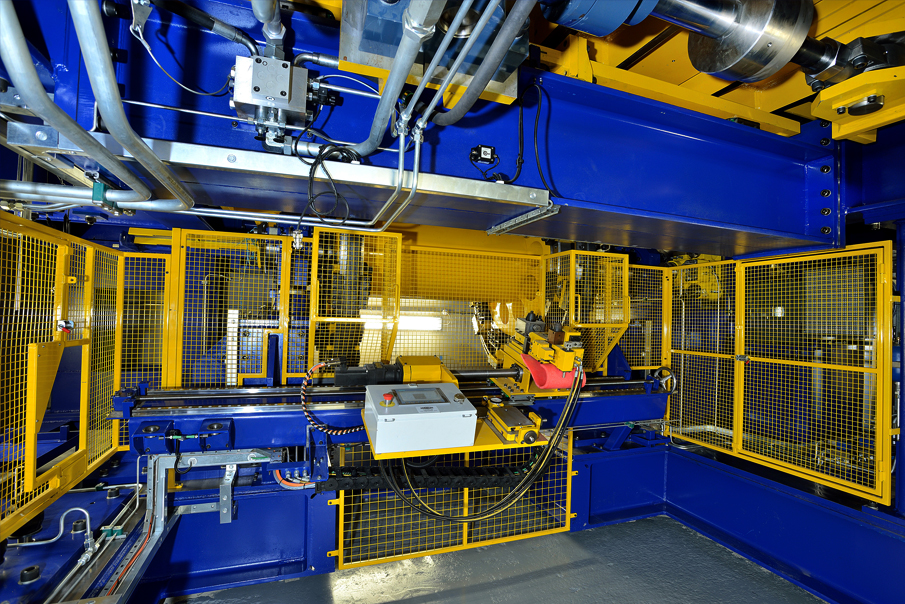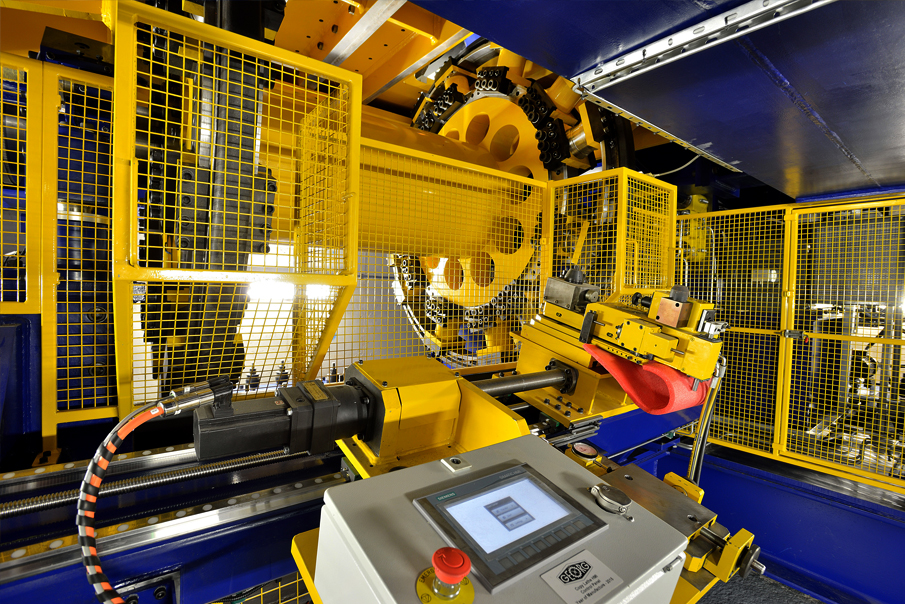University unveils £4.5 million railway test rig
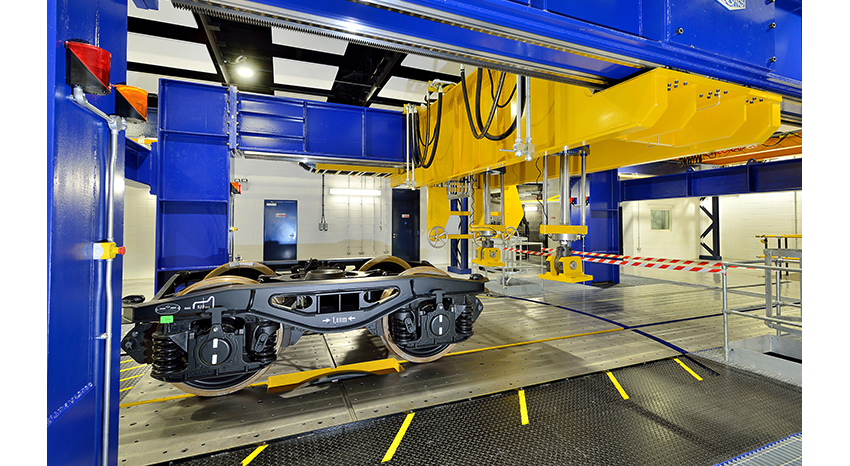
Thu, 13 Oct 2016 10:46:00 BST
…and launches the Centre for Innovation in Rail, created to fast-track innovations in railway technology
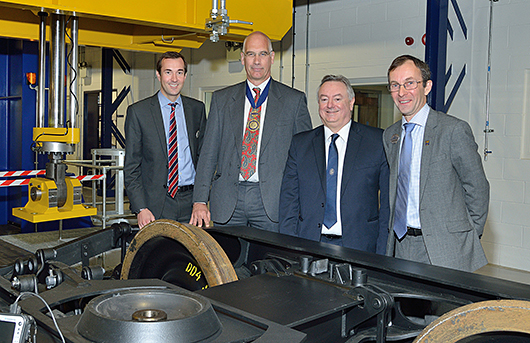 ► Pictured (l-r) IRR Assistant Director Dr Paul Allen, IMechE Rail Division Chairman Richard East, the University's Vice-Chancellor Professor Bob Cryan and the IRR Director Professor Simon Iwnicki.
► Pictured (l-r) IRR Assistant Director Dr Paul Allen, IMechE Rail Division Chairman Richard East, the University's Vice-Chancellor Professor Bob Cryan and the IRR Director Professor Simon Iwnicki.
LEADING figures in the UK railway industry came to the University of Huddersfield to celebrate the completion of a multi-million pound test rig – the only one of its type in Europe – and the inauguration of a new group that will help to fast track innovations in railway technology.
 The University is home to the Institute of Railway Research (IRR). After securing £4.5 million from the Regional Growth Fund, its facilities now include a 150-ton test rig that enables a wide range of experiments to be conducted on a full-size railway bogie. Not for decades has there been anything like it in the UK and it will enable in-depth investigation of many issues surrounding the contact area between wheel and rail.
The University is home to the Institute of Railway Research (IRR). After securing £4.5 million from the Regional Growth Fund, its facilities now include a 150-ton test rig that enables a wide range of experiments to be conducted on a full-size railway bogie. Not for decades has there been anything like it in the UK and it will enable in-depth investigation of many issues surrounding the contact area between wheel and rail.
Installing the rig was a demanding project, requiring 95 piles to be sunk five metres in depth and a system of air springs to prevent excessive vibration. Now, it is ready for use and the rig was officially opened by Richard East, who chairs the Railway Division of the Institution of Mechanical Engineers (IMechE).
The event was attended by over 100 engineers and executives from engineering firms and official rail bodies. After the opening ceremony, groups of them were taken on guided tours of the IRR and its new facilities.
Before the ceremony there was a sequence of talks from special guests, concluding with an address from Mr East. He stressed the need to attract talented young engineers into the railway sector, to meet a range of challenges and opportunities.
Since rail privatisation, passenger numbers had doubled, said Mr East, but the network had remained essentially the same. “This huge amount of growth is starting to challenge the capacity and the resilience that we have,” he warned.
He hoped that issues such as the need for sustainability and greater energy efficiency would motivate the new generation of engineers and he outlined some of the challenges ahead, such as the speedier adoption of novel materials as an alternative to steel, improvements in communication so that trains could be run at closer intervals – boosting track capacity – and lower mass vehicles that would require less energy to accelerate and brake. Also, advances in condition monitoring could mean rail vehicles being taken out of service less frequently.
Mr East said he was encouraged by developments at the IRR, hoping they would help to stimulate young engineers. “The rail industry really is a great place to work!”
Industry partners
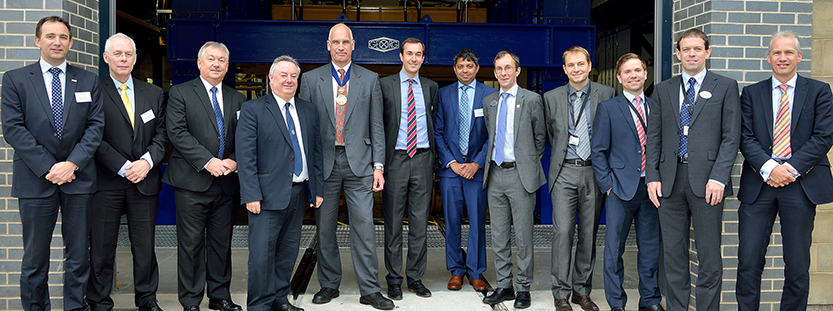
Pictured at the opening ceremony are (l-r) David Clarke (RIA), Chris Lawrence (RSSB), Steve Ingelton (Unipart Rail), the University’s Vice-Chancellor Professor Bob Cryan, IMechE Railway Division Chairman Richard East, IRR Assistant Director Dr Paul Allen, Stirling Kimkeran (Omnicom), IRR Director Professor Simon Iwinicki and IRR senior managers Dr Yann Bezin, Dr Adam Bevan, Julian Stow and Dr Coen Van Gulijk.
The sequence of talks was launched by the Vice-Chancellor of the University of Huddersfield, Professor Bob Cryan.
“Railways have not only retained their importance as part of our transport infrastructure, but it can also be argued that for a variety of environmental and economic reasons, they are destined to be more important than ever,” he said.
“This is why the work of the Institute of Railway Research is so vital, and why I am deeply proud that it is located here at the University of Huddersfield.”
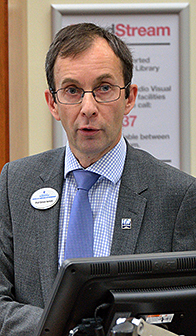 The Director of the IRR, Professor Simon Iwnicki (pictured right), described the wide range of research being conducted by the Institute, which investigates issues such as rolling stock, track materials, railway infrastructure and braking systems. He described some of the important partnerships that had been formed with major firms and agencies and outlined the potential and importance of the new rig.
The Director of the IRR, Professor Simon Iwnicki (pictured right), described the wide range of research being conducted by the Institute, which investigates issues such as rolling stock, track materials, railway infrastructure and braking systems. He described some of the important partnerships that had been formed with major firms and agencies and outlined the potential and importance of the new rig.
“We do a lot of research by computer modelling, but this needs to be supported by testing and that is why what we are showing you today is so important to us,” said Professor Iwnicki.
He also spoke of his mission to encourage young people to develop an interest in railway engineering and described two initiatives in which he has been closely involved – the annual Railway Challenge by the IMechE – and rail summer schools organised by the Smallpeice Trust.
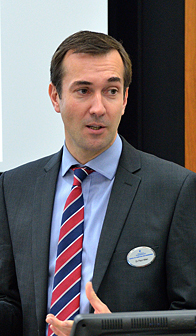 The IRR now includes a unit named the Centre for Innovation in Rail (CIR). It was set up to help the railway supply chain to develop innovative products and is a conduit for research activity within the IRR, aiming to work with industry, especially small to medium sized firms. Dr Paul Allen (pictured left) described its work, listed some of the partnerships that had been formed and told how it was multi-disciplinary in its approach.
The IRR now includes a unit named the Centre for Innovation in Rail (CIR). It was set up to help the railway supply chain to develop innovative products and is a conduit for research activity within the IRR, aiming to work with industry, especially small to medium sized firms. Dr Paul Allen (pictured left) described its work, listed some of the partnerships that had been formed and told how it was multi-disciplinary in its approach.
Other speakers at the launch event included Chris Lawrence, Technical Director of RSSB (Rail Safety and Standards Board) – who have a strategic partnership with the IRR. He described the importance of collaboration with universities and described some of the research areas involving the IRR and how the new test rig would make a major contribution.
The audience also heard from Dr Steve Ingleton, Engineering Director of Unipart Rail, who said that the lack of a comprehensive testing facility in the UK meant that new IRR test rig was much needed. It would be a focal point for innovation and help accelerate new products to market.
Stirling Kimkeran, Head of Technical Services at Omnicom Balfour Beatty, said that his company had worked very successfully with the Professor Iwnicki and the IRR and he would encourage companies big and small to engage with the Centre for Innovation in Rail.
Simon Rennie, of the National Training Academy for Rail (NTAR) spoke about the organisation’s role in bridging the skills gap, which will be vital because some 15,000 people currently working in rail are due to leave the industry or will need upskilling. One of the important roles played by universities would be in offering specialist degree courses that would encourage the idea of a career in rail.
David Clarke, Technical Director of the Railway Industry Association, described how the Rail Supply Group were pushing forward a strategic initiative to encourage innovation that would put the railways on a par with sectors such as construction and automotive. There would be a coherent skills plan and a focus on exports and inward investment, plus an attempt to overcome the risk aversion that he said had often accompanied railway projects. The University of Huddersfield would be leading the rolling stock element of this initiative.
